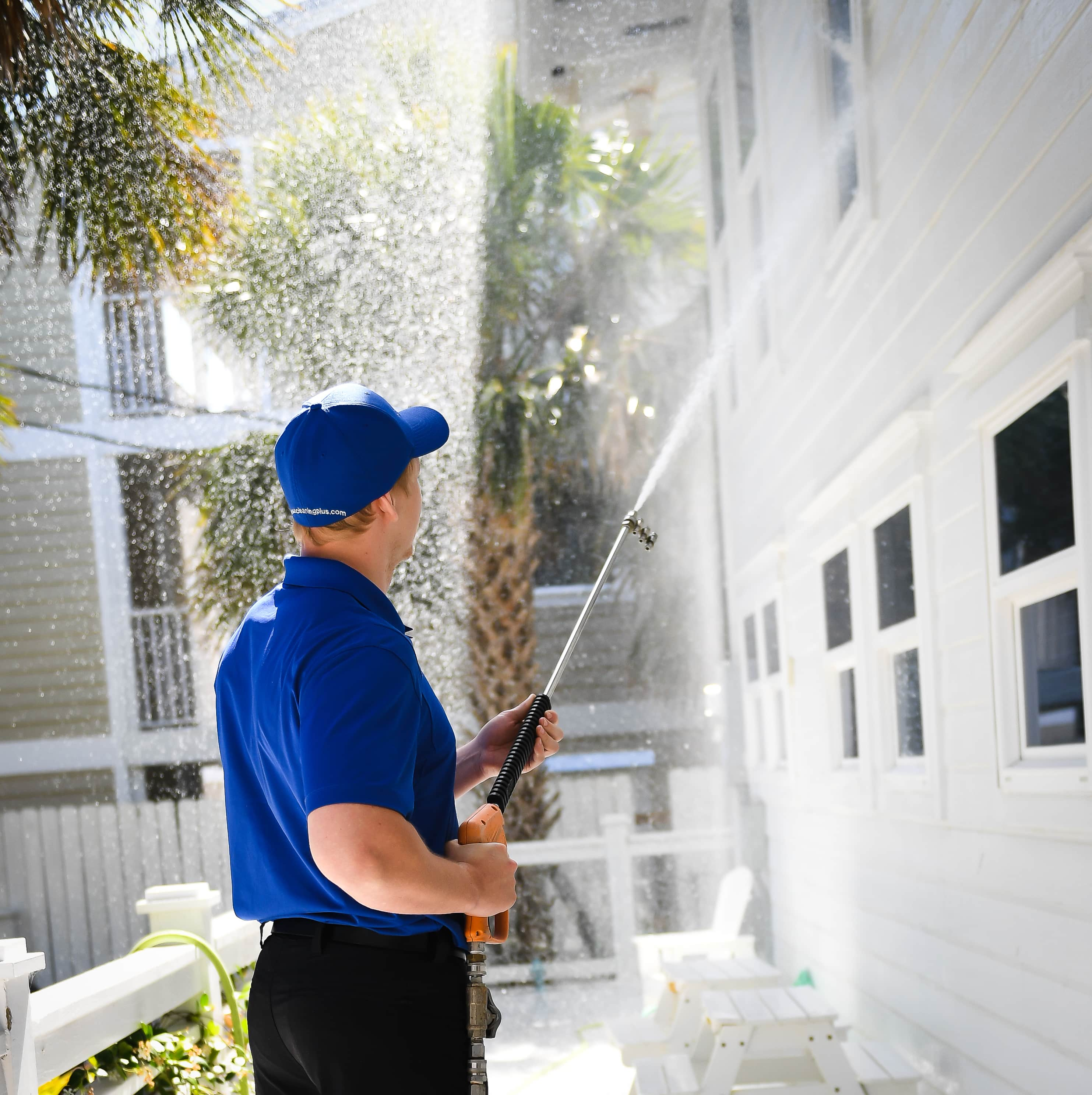Gradually, buildup occurs, making House Washing a must.
Gradually, buildup occurs, making House Washing a must.
Blog Article
Recognizing the Key Differences In Between Pressure Washing and House Washing
The distinction in between pressure washing and home washing is vital for house owners looking to maintain their residential or commercial property's exterior. While pressure washing uses high-pressure water jets to eliminate stubborn crud from robust surfaces, home washing utilizes a gentler strategy that integrates environment-friendly cleaning representatives to safeguard even more delicate products.
Meaning of Pressure Washing
Pressure washing, frequently described as power washing, includes making use of high-pressure water spray to eliminate dirt, gunk, mold, mold, and other impurities from various surface areas. This strategy is specifically effective on tough surface areas such as concrete, brick, and stone, making it a suitable choice for cleaning up driveways, outdoor patios, and walkways. The process normally utilizes customized equipment that creates water pressure ranging from 1,500 to 3,000 psi or even more, guaranteeing reliable cleaning even in tough conditions.
Pressure washing is not limited to exterior surfaces; it can likewise be used for various applications, consisting of lorries, outdoor furnishings, and equipment. It is crucial to note that the intensity of the water pressure can possibly damage delicate surface areas, such as timber or repainted coatings, if not handled properly. Selecting the appropriate pressure setup and nozzle kind is vital for ideal results.
In addition to surface area cleansing, pressure washing can likewise play a substantial role in preserving the long life of frameworks by preventing the build-up of hazardous pollutants that can lead to deterioration. Generally, pressure washing functions as an effective tool for boosting cleanliness and preserving the stability of different surface areas.
Interpretation of Home Washing
Home washing describes the thorough cleaning of a home's outside surface areas, making use of a mix of low-pressure water and specialized cleansing remedies. This technique is created to eliminate dust, mold, mold, algae, and various other contaminants that gather in time, maintaining the visual allure and structural stability of the building.
Unlike pressure washing, which uses high-pressure streams of water, home washing emphasizes the usage of reduced pressure to avoid damage to fragile surfaces such as siding, roof covering, and painted finishes. The cleansing services made use of are commonly naturally degradable and formulated to properly deal with specific problems, ensuring a thorough tidy without compromising the setting or the integrity of the products being treated.
Home washing is particularly valuable for preserving the look of vinyl, timber, stucco, and block exteriors. Normal house washing not just enhances visual allure but additionally adds to the durability of a home's outside surfaces by alleviating the effects of dangerous microorganisms and toxic wastes. Homeowners are motivated to set up original site house washing regularly to guarantee their home continues to be in optimal condition, therefore guarding their financial investment.
Secret Techniques Used
In the realm of exterior cleansing, various strategies are used to accomplish optimal results throughout residence washing. The key method involves soft washing, which uses low-pressure water incorporated with specialized cleansing solutions. This method properly removes dirt, algae, and mildew without harmful delicate surfaces such as wood or painted home siding.
An additional trick strategy is using a surface cleaner attachment, which is particularly effective for flat surfaces like patios and driveways. This tool provides uniform cleansing by making use of revolving jets that cover a bigger location, making certain regular outcomes.
Chemical application is additionally crucial in house washing. Cleansers such as salt hypochlorite or eco-friendly cleaning agents are commonly made use of to damage down hard spots and organic growth. House Washing. Correct dilution and application approaches are crucial to decrease any kind of prospective damage to plants or landscaping
Ideal Surface Areas for every
When establishing the proper cleaning technique, it's vital to take into consideration the sorts of surface areas involved. Pressure washing, which uses high-pressure water jets, is ideal fit for hard, sturdy surfaces that can hold up against extreme force. Usual applications include driveways, outdoor patios, sidewalks, and decks. These surfaces usually build up challenging stains, such as oil, oil, and mold, which require the effective cleansing action offered by pressure washing.
On the other hand, residence washing normally employs a softer method, making use of low-pressure water combined with specialized cleaning agents. This technique is optimal for more delicate surface areas, including painted timber, plastic house siding, and stucco. Home washing successfully eliminates dirt, plant why not look here pollen, and mold without running the risk of damages to the outside surface. It is specifically beneficial for areas where sensitive materials are involved, as it minimizes the potential for chipping or stripping paint.
Advantages and Downsides

On the other hand, home washing uses a gentler strategy, typically using a combination of low-pressure water and cleaning services. This technique Bonuses is more secure for repainted surfaces, siding, and roofings, assisting to maintain their honesty. The primary drawback of house washing is that it may not eliminate deeply ingrained dust or persistent discolorations as effectively as pressure washing, which can require more time and several applications.

Conclusion
In summary, pressure washing and home washing offer unique objectives in exterior cleaning (House Washing). Pressure washing uses high-pressure water streams, making it suitable for long lasting surface areas and effective versus challenging stains.
Report this page